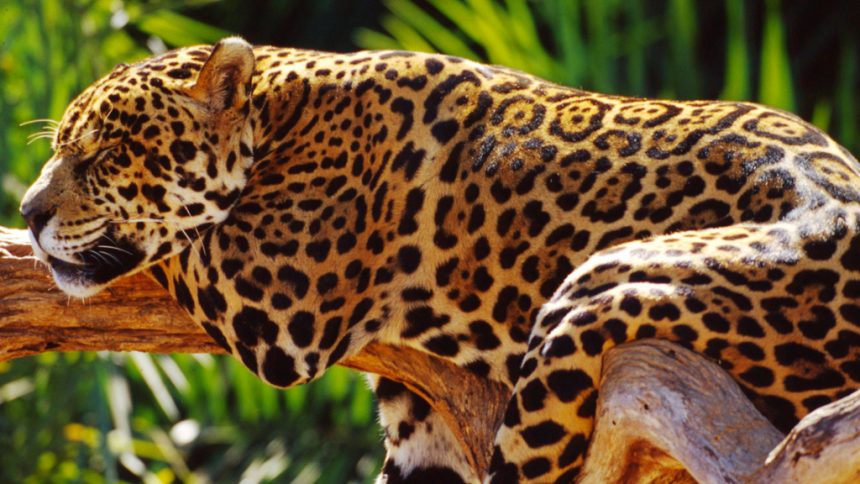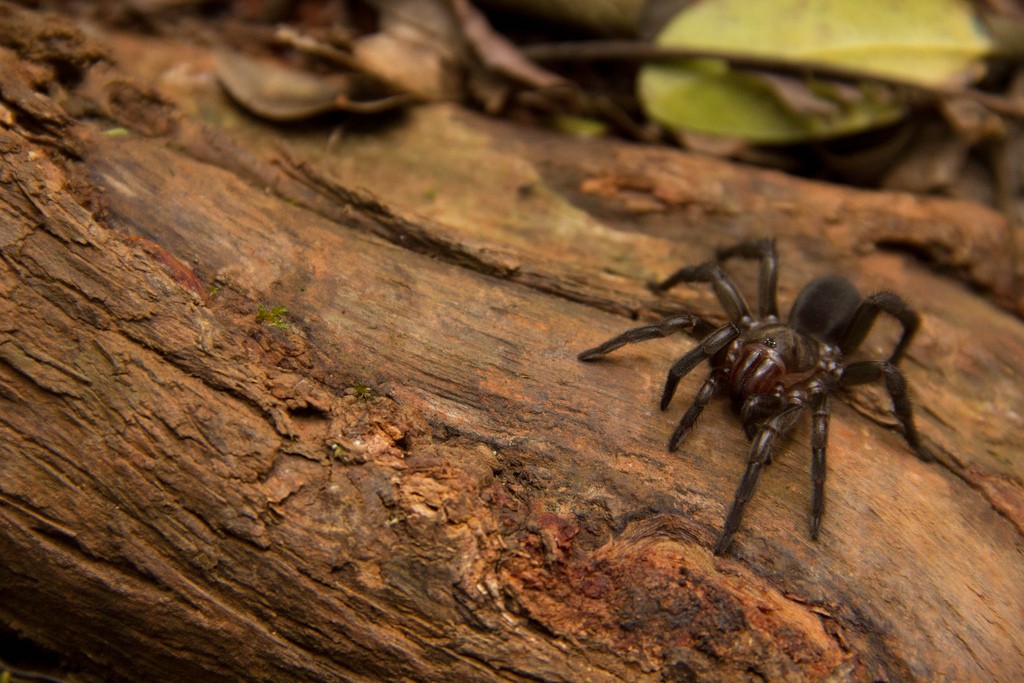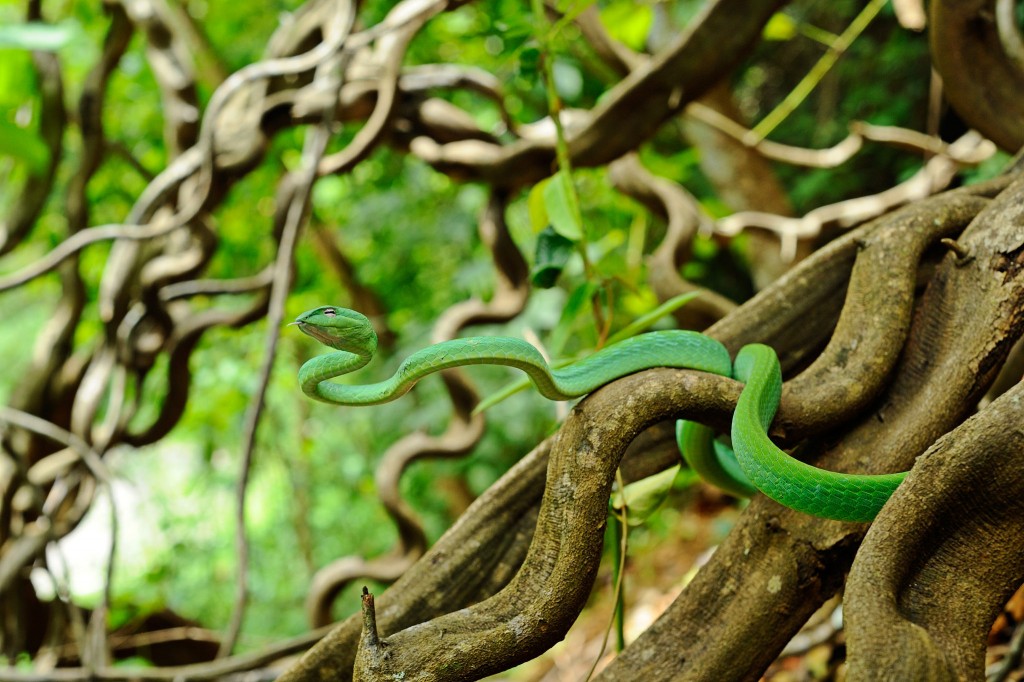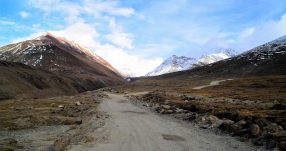Now, that we’ve already learned how not to starve or to catch a nasty parasite through our drinking water, it is time to turn our attention to the really unpleasant things: all the little mosquitoes, spiders, ants, ticks, leeches and similarly popular creatures, we just can’t avoid in a tropical jungle. And last but not least, you should not grow roots yourself, but make your way back to civilization. The second part of our guide on how to survive in a tropical jungle will help you with that!
Photo by Land Rover Our Planet.
All These Little Critters
Maybe better look for another place to rest. Photo by Moisés Silva Lima.
Tropical jungles are (in)famous for their abundance of insects, snakes, leeches and everything else, that regularly shows up in your nightmares.
But even though you will come across countless spiders, many of which are venomous, they are not the merciless killing machines Discovery Channel wants to make us believe. Their bite is often nothing more than a wasp sting. Scorpions can be much more painful. Also, these sneaky little devils love it to hide in your clothes and shoes. Centipedes can become quite huge and their legs can leave nasty little wounds on your skin, some also bite. Always brush them off in their moving direction, to avoid their legs digging deeper into your skin. Leeches are not too painful, but you’ll still want to remove them, since they can carry parasites. Better not brush them off, since a part of their head can get stuck and cause infections. If possible, use some fire, a glowing stick or salt to get rid of them.
The best protection against all your new travel companions is to always keep your sleeves down and to wear long pants (both also protects you from scratches from the vegetation). Put your pants into your socks and make it a little bit harder for ticks and leeches to get to your skin. When undressing, always check your whole body for any kind of insects and remove them. Carefully check your clothes and shoes before putting them back on.
Blending in. Photo by tontantravel.
Snakes are usually as eager to meet you, as you are eager to meet them, so with a little luck you won’t see any. It is still advisable to use a long stick to separate the vegetation while moving forward. It also protects you from spiders, ants and others. Use it also to turn stones or dig in old leaves, while searching for food. If you should get bitten after all, move very slowly, or – if possible – stop moving completely, to prevent the venom to spread. Often snake venoms are not lethal or they don’t inject a full load, so don’t despair too early!
The most dangerous animals are some of the tiniest ones: mosquitos. They carry diseases such as malaria or dengue fever and there are millions of them. If you don’t have a repellent with you, rub mud on your skin. When it is dry, it will be a useful barrier. Try to cover your hands and neck with cloth, if somehow possible.
Even tinier are the omnipresent bacteria. The humid jungle is the perfect hotbed for infections of all kind, even little scratches can quickly turn into something ugly. So when you move, be very careful and avoid contact with any vegetation, that could cut you. Also try to keep your clothes as clean as possible, especially your socks. Wash them regularly and dry them in direct sunlight or over fire. Try to keep your feet as dry as possible. A constantly wet environment is basically begging for infections to happen.
And the last group to avoid – some of them almost as small as bacteria and many of them at least as unpleasant: parasites. Avoid drinking unboiled water. Also the rivers are full of them and they can bring you horrors not even Stephen King could dream of (ever heard of this little fish, which swims up the male urethra and makes himself comfortable up there?). So if possible, never get more than knee deep into water, and that also only if you don’t have any injuries on your legs. River crossings are best completely avoided.
Be Like Water, My Friends
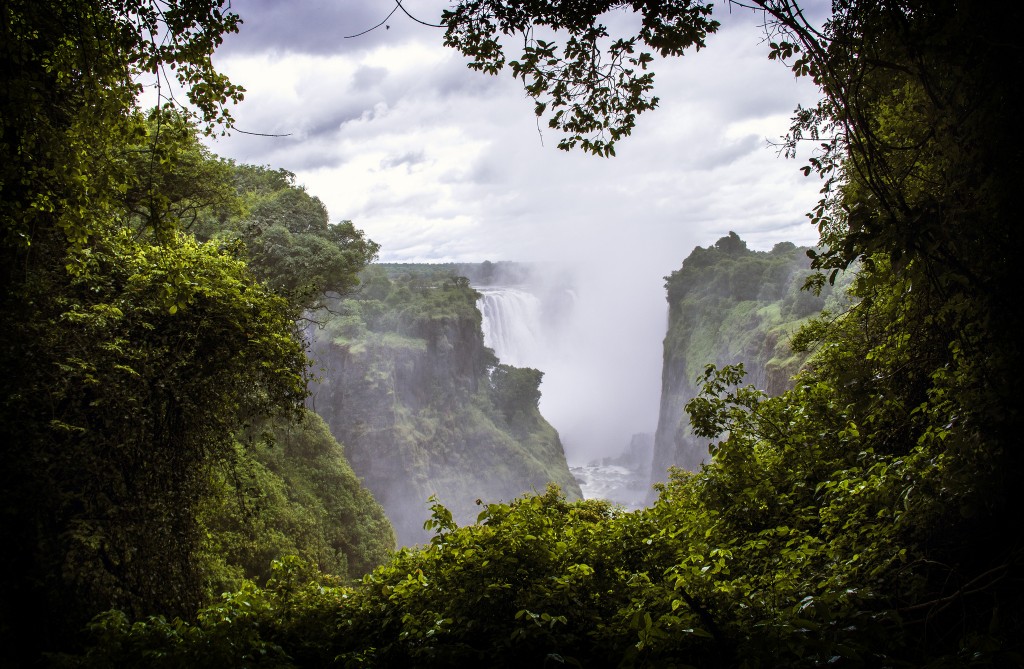
Probably not this way. Photo by Christiaan Triebert.
Or at least try to be a little flexible, use your hips and your shoulders to move smoothly through the undergrowth. With the thick canopy, it is almost impossible for a rescue team to see you from the air, so you don’t have much choice but hiking in direction of civilization yourself. The only exception is, when someone exactly knows where you are, then don’t move and just concentrate on water, food and shelter.
Focus not on the area directly in front of you, but try to look ahead and to discover natural openings or game trails. The latter often lead to water sources or bigger openings in the thicket. Use a stick to part the vegetation to avoid cuts and too reduce contact to all the critters we’ve mentioned above about.
Orientation in the jungle is extremely difficult, since you can’t use any landmarks as help. Try to pick one specific object in some distance in front of you, let’s say a prominent tree (you’ll have a few to choose from). Once you’ve reached it, pick another one. This will help you to walk more or less in a straight line. But don’t walk straight by all means necessary. If there is a huge obstacle, rather walk around it, to save your energy.
And just in case there is a rescue party looking for you after all, leave piles of rock on your trail and break branches at eye level, to give them an indication where you went to.
And now, dear adventurers, put down your internet device and start your fight for survival! Wait, you are not stuck in a jungle? Maybe our tips on how to survive in a desert can help you!
About the author
Barbara
Barbara is a German-born Austrian with unresolved identity issues and a degree in Ecology and Nature Conservation. Three years ago, she moved to Budapest, Hungary. She travels the world whenever she can, equally chasing interesting stories and fluffy cats. She is a travel writer who loves adventure and never says no to any challenge.
In adventure travel news, n innovative new natural desert reserve spanning 10 percent of the total area of Dubai has been launched in the UAE. The Marmoon Desert Reserve Project is set to be the site of several ecotourism projects and conservation efforts contributing to the protection and nurturing of the environment,…
Hot Topics
In adventure travel news, n innovative new natural desert reserve spanning 10 percent of the total area of Dubai has been launched in the UAE. The Marmoon Desert Reserve Project is…


